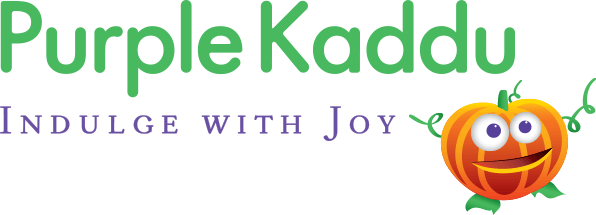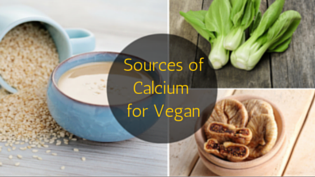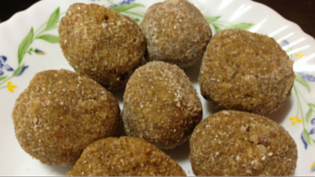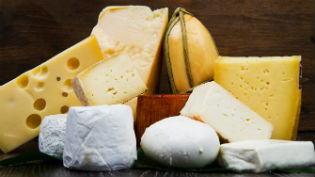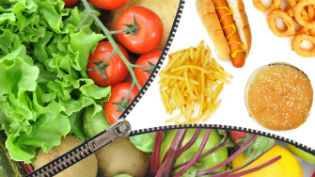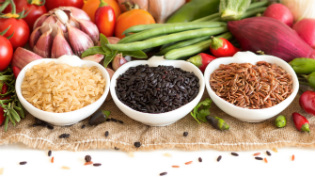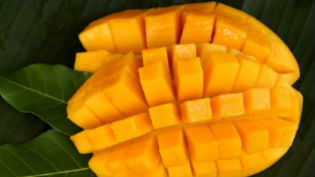
15 High Protein Vegetarian & Vegan Foods
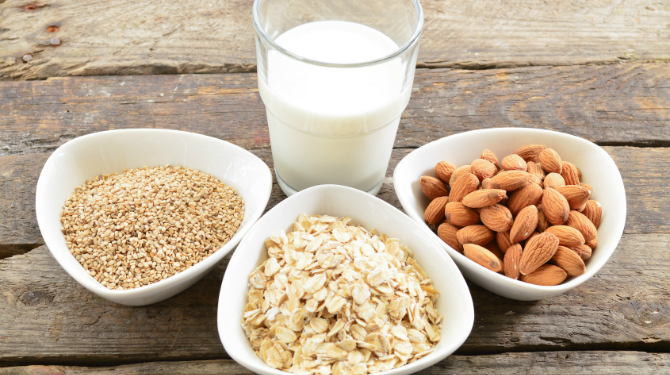
Vegan or vegetarian, there are plenty of plant foods that provide good amount of protein. Yes, protein isn't meat. But before we discuss these foods, keep in mind that some foods are incomplete proteins, hence combining them with complete ones will let you benefit.
Here's the list of 15 foods and their combinations that will definitely help you pump up your protein levels:
Soyabean:
1/4 cup raw, 30g gives 13g protein
Soyabean can be used in curries or you can opt for various soyproducts such as soy chunks, soy granules that work well in pulav or when used as a filling for sandwiches and parathas. Soya atta can be mixed with regular atta to enhance the health quotient of your chappati.
Greek yogurt/Hung curd (not applicable to vegans):
1 cup, 100g gives 10g protein
Greek yoghurt is just a fancy name. In simple terms, it is hung curd ( curd tied in a cloth and hung such that liquid oozes out and a thick creamy curd collects in the cloth ). Have fun by dipping veggie sticks into it or as a salad dressing, sandwich spread or as is.
Agathi:
1/2 bunch, 100g gives 8g protein
Agathi is an incomplete protein, hence must be combined with quinoa, amaranth or soy.These leaves can be used in quinoa pilaf or added in soybean based chilla.
Cheese (not applicable to vegans):
1.5 cubes, 30g gives 7g protein
Grate it over salad, let it melt between two bread slices or enjoy as.
Cottage cheese (made from cow’s milk) (not applicable to vegans):
3 medium squared pieces, 40g gives 7g protein
Paneer can be used in salad as a sandwich filling, in parathas, gravies and in biryani too.
Drumstick leaves:
½ bunch, 100g gives 7g protein
Drumstick leaves is an incomplete protein, hence must be combined with quinoa, amaranth or soy. Try using these leaves in wraps or soy sabzi.
Pulses and legumes (moong dal, urad dal, chickpea, rajmah, matki, chawli, field beans(vaal), navy beans):
1/4 cup raw, 30g gives 7g protein
Pulses too are incomplete proteins and hence must be combined with cereal, milk, quinoa or amaranth. Eg. dal rice, oats and moong tikki, rajma paneer pulav, pasta with cheesy beans, hummus and pita.
Tofu(Soya Paneer):
3 medium squared pieces, 40g gives 6g protein
Tofu is paneer made from soy milk.You can use it the way you use paneer (in wraps and sandwiches). One can also try tofu bhurji.
Milk (3.5% fat) (not applicable to vegans) :
150ml, 1 cup gives 5g protein
Milk can be consumed as a beverage, along with cereals and can also be used to form dough.
Soy milk:
150ml, 1 cup gives 5g protein
This is a great alternative to those who are lactose intolerant (cannot digest milk). Plain soy milk tastes bland and may not be appealing to all, hence making shakes using soy milk will add to the palatability.
Cereals (whole wheat, bajra, barley, amaranth(rajgira), buckwheat (kuttu), teff, quinoa):
¼ cup raw, 30g gives 4g of protein
Just like pulses, cereals too are incomplete sources of protein and hence must be combined with pulses, milk. Eg. dal rice, curd rice, poha topped with sprouts, oats upma made using curd, buckwheat porridge etc.
New entry in cereal dictionary is teff - a seed of a grass native to Ethopia, and is as tiny as the poppy seed. Teff can be ground into flour/cooked in water and used as substitute for rice or as porridge.
Amongst all cereals, amaranth and quinoa are the only exceptions - i.e. it is a complete protein. Best way to enjoy these are by popping them. Popped amaranth and quinoa can then be sprinkled on gravies, salads and cereals or used in granola bars.
Groundnut:
1½ -2 tbsp, 15g gives 4g protein
These nuts are incomplete proteins and hence combination with milk, amaranth, quinoa or soy is recommended. Eg. groundnut milkshake. Peanut can also be powdered and added to gravies, used with popped amaranth and jaggery to form a health bar.
Khoa (mava) (not applicable to vegans):
1tbsp, 20g gives 3g of protein
Use it as a topping, in dips or in curries to give a rich taste.
Nuts (almond, cashew nut, pistachio):
15 counts of nuts i.e. 15g gives 3g protein
Nuts are incomplete proteins, combination with dairy products, amaranth,quinoa or soy is recommended. eg. cheese/paneer with nuts, quinoa porridge topped with nuts etc.
Seeds (flaxseeds, sesame seeds, pumpkin seeds, melon seeds, poppy seeds):
1 tbsp, 15g gives 3g protein
Just like nuts, seeds are incomplete proteins, and combination with dairy products, soy, amaranth or quinoa will make them complete. E.g. popped amaranth mixed with seeds makes a great snack, sprinkling these seeds on bean gravy etc.
Protein was and never has been an issue with veg or vegans. It's all about exploring the foods and the right combinations! Happy Eating
